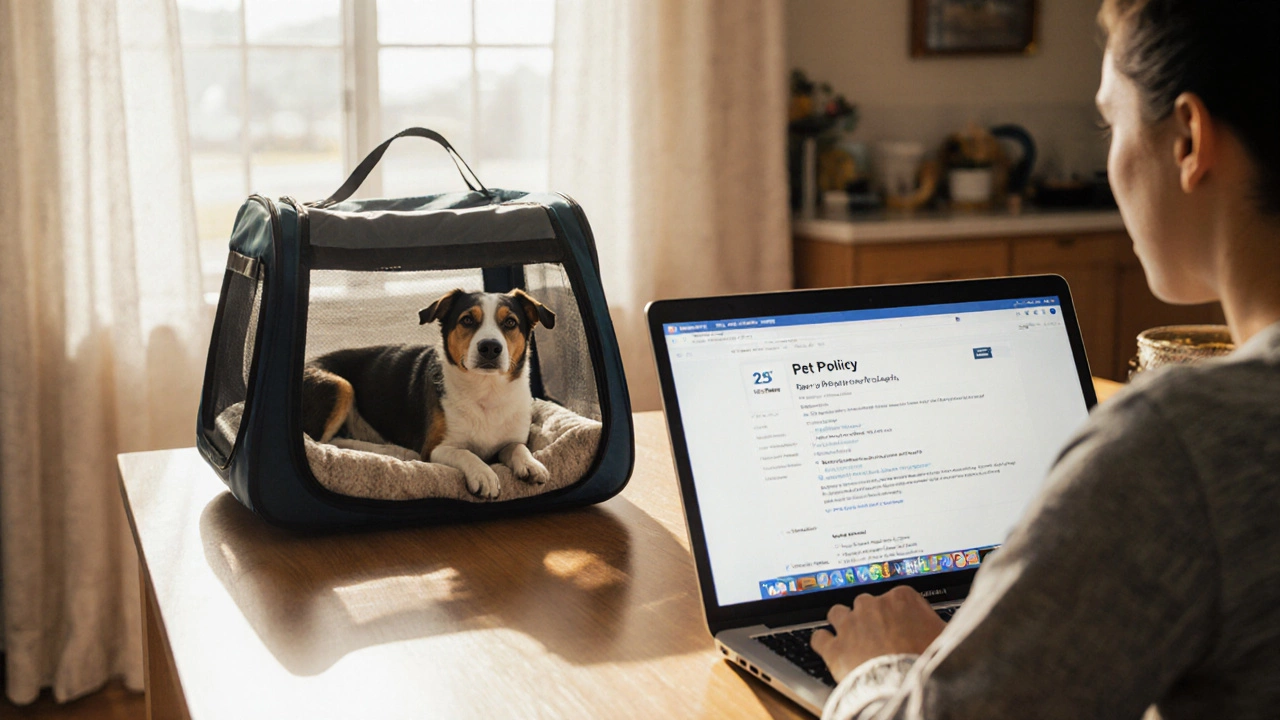Dog Cabin Rules: How to Fly Safely with Your Dog
When you’re gearing up for a flight, dog cabin rules, the set of guidelines airlines and pet owners follow to keep dogs safe and comfortable while in the cabin. Also known as in‑cabin dog regulations, they help you avoid surprises at the gate and make the journey less stressful for everyone.
dog cabin rules aren’t just a checklist; they link directly to the bigger picture of dog travel, any trip where a dog moves from home to another location, whether by car, train, or plane. That travel experience depends heavily on a good pet carrier, a crate or bag that meets airline size and ventilation standards and gives a dog a safe space during the flight. Airlines also publish specific airline regulations, rules about weight limits, documentation, and where the carrier can be placed in the cabin that you have to follow. Finally, a dog’s emotional state matters—a calm pup handles turbulence better, so understanding dog anxiety, the stress response many dogs show when faced with new environments or loud noises can shape how you pack treats, toys, or soothing aids.
Key Points to Remember
First, check the airline’s pet policy early. Some carriers allow one dog under 15 lb, others require a fee or a health certificate. Second, measure your carrier inside the cabin seat dimensions—most airlines use a 45 cm × 30 cm × 25 cm limit. A carrier that’s too big gets denied at the boarding gate, which defeats the whole purpose of planning ahead.
Third, decide whether a crate or a soft‑sided carrier works best for your dog’s sleeping style. A hard crate feels like a mini‑home and keeps the dog from rolling around; a padded carrier feels cozier and may reduce anxiety. Whichever you choose, line it with a familiar blanket and a chew‑safe toy. Fourth, manage anxiety with proven tricks: a short walk before security, a calming chew, or a pheromone spray placed in the carrier can keep nerves low.
Fifth, keep documentation handy. A recent vet health check, proof of rabies vaccination, and a signed airline health form are usually required. Having these papers in a folder attached to the carrier means you won’t scramble at the desk.
Sixth, plan for the flight duration. For short hops, a quick water break before boarding might be enough. For longer journeys, ask the airline if you can offer a small water dish during the flight and bring a tiny snack to keep hunger at bay. Remember, most airlines only allow water after take‑off and before landing.
Finally, practice the carrier at home. Let your dog explore it, nap inside, and eat a treat while it’s closed. This familiarisation reduces surprise when the seat belt clicks and the carrier is tucked under the seat.
All these steps line up with the core idea that dog cabin rules encompass airline regulations, dog cabin rules require the right pet carrier, and dog anxiety influences how comfortable a dog is during the flight. By treating each piece as part of a chain, you turn a potentially stressful trip into a smooth, enjoyable experience for you and your furry friend.
Below you’ll find a hand‑picked collection of articles that dive deeper into each of these topics—from crate vs. bed choices to calming aids, from grooming tips that keep your dog fresh for travel to the best food brands for a healthy journey. Use them as a step‑by‑step guide to master every aspect of traveling with your dog in the cabin.
Can I Fly with a 25‑lb Dog? Airline Rules, Costs & Practical Tips
Learn if a 25‑lb dog can fly in cabin or cargo, airline policies, fees, required documents, carrier tips, and stress‑reduction tricks for a smooth pet travel experience.
